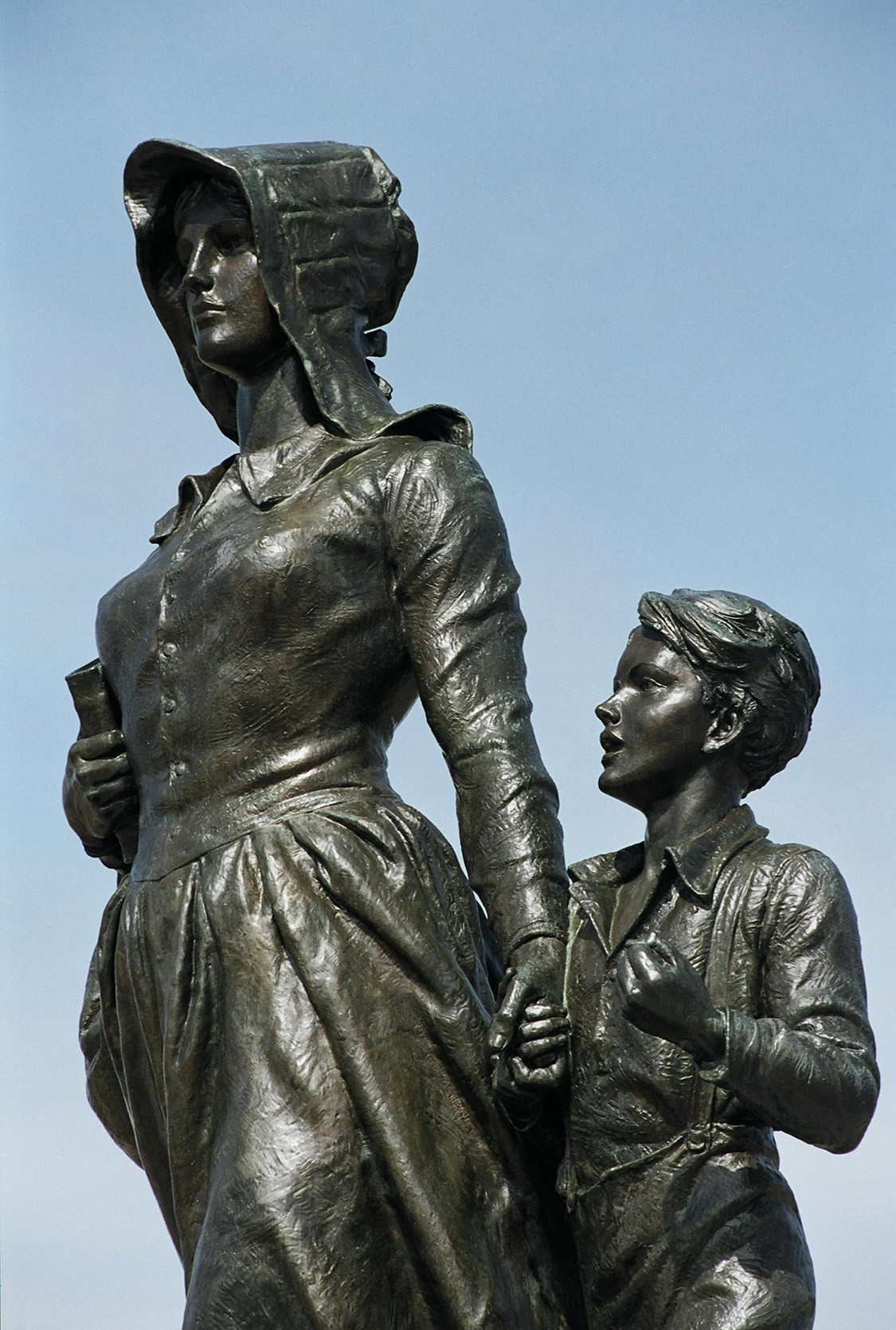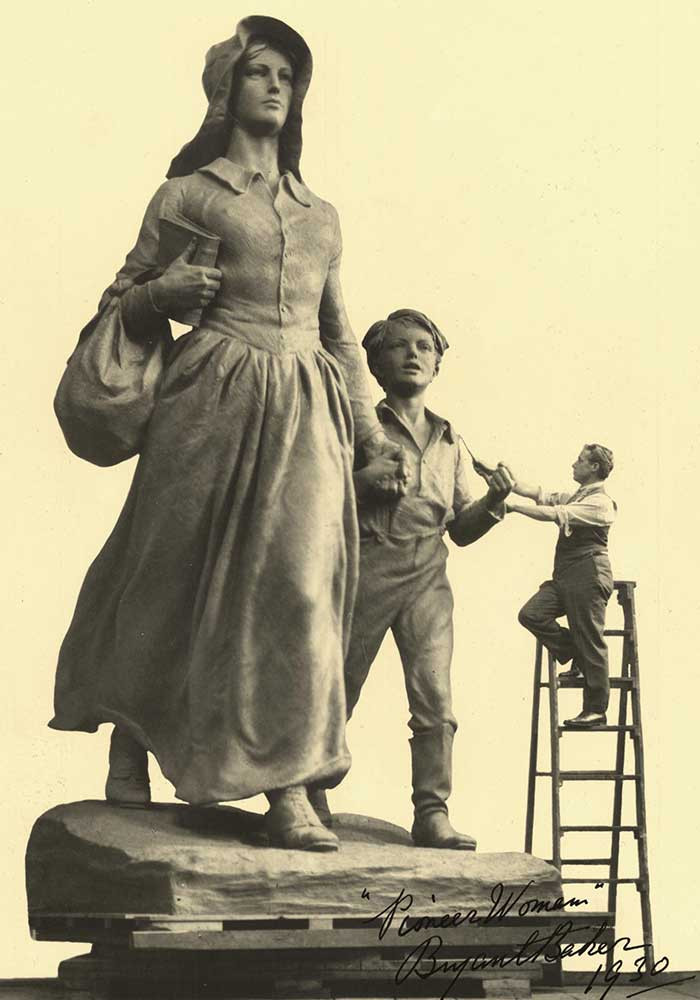
The Pioneer Woman statue, a monumental bronze sculpture, stands proudly in Ponca City, Oklahoma, serving as a powerful tribute to the resilience and courage of pioneer women. Created by the British-born sculptor Bryant Baker, this seventeen-foot-tall artwork depicts a determined woman leading her young son forward, a Bible firmly held under her arm. Dedicated to the “heroic character of the woman who braved the dangers and endured the hardships incident to the daily life of the pioneer and homesteader in this country,” the Pioneer Woman embodies the spirit of those who settled the American West.

The story of the Pioneer Woman began in the late 1920s with Ernest W. Marland, a prominent Oklahoma oilman and future governor. Marland envisioned a monument that would honor the contributions of pioneer women to the development of the region. To ensure the statue’s artistic merit and public appeal, Marland organized a national competition in 1926-1927. He invited twelve distinguished American sculptors, including renowned figures like A. Stirling Calder and James Earle Fraser, to submit models for the proposed Pioneer Woman statue. Each artist received a $10,000 advance and a set of sunbonnets to inspire their designs, alongside a written brief outlining the concept of the monument.
The competition generated significant public interest. In 1927, the submitted models were unveiled and showcased in major cities across the United States, from New York to Oklahoma City. An innovative public voting system was implemented, allowing people to express their preferences for their favorite Pioneer Woman design. Over 750,000 votes were cast, reflecting the widespread enthusiasm for the project. Bryant Baker’s model, titled “Confidence,” ultimately won the commission and a $100,000 prize. His depiction of the Pioneer Woman, exuding strength and determination, resonated deeply with the public.

The dedication ceremony for the Pioneer Woman statue on April 22, 1930, was a grand event, drawing a crowd of forty thousand people to Ponca City. Humorist Will Rogers delivered a heartfelt tribute to all pioneers, with a special emphasis on the women of Oklahoma. Adding to the national significance of the event, President Herbert Hoover and Oklahoma-born Secretary of War Patrick J. Hurley addressed the audience via a live radio broadcast from Washington, D.C. The Pioneer Woman statue quickly became a beloved landmark and a symbol of Oklahoma’s heritage.
Today, the Pioneer Woman statue continues to stand as a powerful reminder of the courage, resilience, and faith of the women who played a vital role in shaping Oklahoma and the American West. Located adjacent to the Pioneer Woman Museum in Ponca City, the statue and museum together offer a rich and insightful experience for those seeking to understand the legacy of pioneer women. The twelve models submitted for the competition, along with a “Pioneer Man” model also created by Baker, are preserved at the Woolaroc Museum near Bartlesville, offering a broader view of the artistic vision behind this iconic monument. The Pioneer Woman statue remains a testament to the enduring spirit of the pioneers and a celebrated piece of American public art.
Further Reading:
- “Bryant Baker,” in Dictionary of America Painters, Sculptors, and Engravers, ed. Mantle Fielding (1926; rev. ed., Green Farms, Conn.: Modern Books, 1974).
- Donald De Lue, “Bryant Baker,” National Sculpture Review (Fall 1964).
- “Exhibition of Models for a Monument to the Pioneer Woman (New York: Reinhardt Galleries, [1927?]),” in “Pioneer Woman Statue,” Vertical File, Research Division, Oklahoma Historical Society, Oklahoma City.
Citation:
Dianna Everett, “Pioneer Woman,” The Encyclopedia of Oklahoma History and Culture, https://www.okhistory.org/publications/enc/entry?entry=PI011. Published January 15, 2010.
© Oklahoma Historical Society

